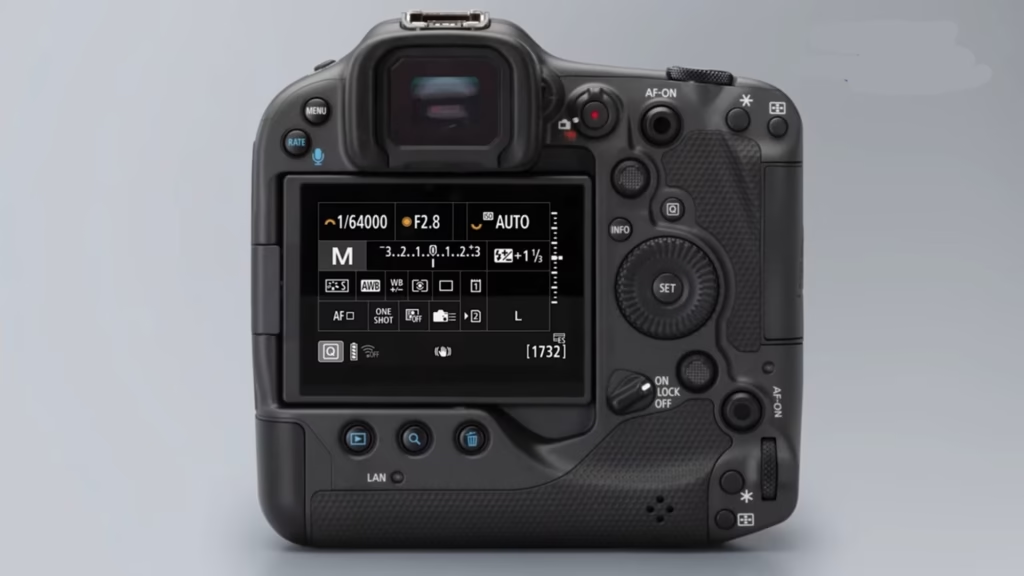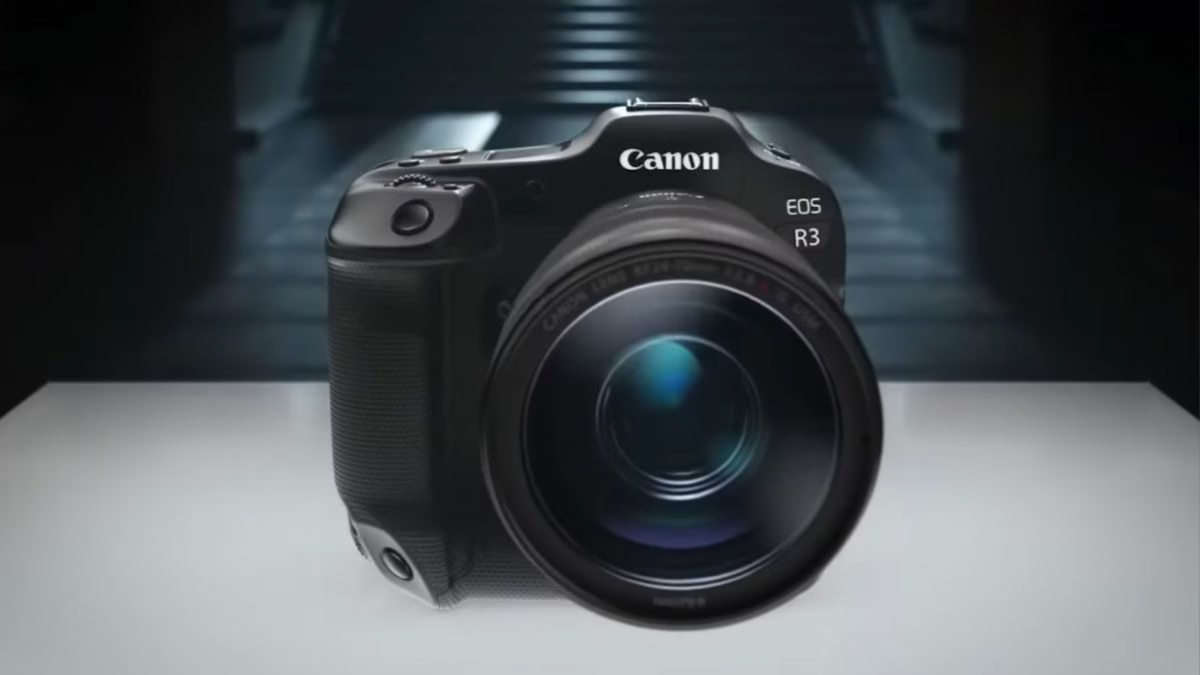The Canon EOS R3 Mark II is a highly anticipated mirrorless camera. Many photographers and videographers are eager to see its upgrades. Rumours indicate the R3 Mark II may have a global shutter sensor and better autofocus. we’ll discuss all the rumours about its design, sensors, autofocus, video features and more.
Design & Build
The EOS R3 Mark II is expected to have a tough yet lightweight magnesium alloy body, making it easy to handle and durable in harsh conditions. Professional photographers need cameras that can handle extreme weather, and Canon builds them to last. Whether it’s heat, cold, dust, or humidity, the R3 Mark II should be highly resistant. The camera is expected to have dust and moisture protection, with sealed buttons and ports to keep out water and dirt.

It’s deep grip will provide a secure and comfortable hold, which is important for long shooting sessions, especially for sports and wildlife photographers. Canon designs its cameras for quick and easy control. The R3 Mark 2 will likely have well placed buttons and dials for fast adjustments, a bright rear LCD and customizable buttons to fit different shooting needs.
Viewfinder & Display
A higher resolution electronic viewfinder is expected, possibly with a refresh rate of 120 Hertz or higher for a smoother viewing experience. The original R3 had a 5.76 million dot EVF, but Canon could introduce an even sharper and faster display in the new model.
The rear LCD screen may also be upgraded, possibly adopting OLED technology for better contrast and colour accuracy. This will help review images and videos in bright outdoor conditions.
Sensor & Image Quality
One of the biggest expected upgrades in the EOS R3 Mark II is the introduction of a 24 megapixel global shutter sensor. A global shutter differs from a traditional rolling shutter by capturing the entire image at once, rather than scanning it line by line. This technology helps eliminate distortion in fast-moving subjects, making it ideal for sports, wildlife, and action photography.
Canon has reportedly been working on global shutter technology for some time, and the R3 Mark II could be the first EOS R camera to feature it. The sensor is expected to deliver high-quality images with improved dynamic range and color accuracy.
However, some compromises come with global shutter sensors, such as potential limitations in low-light performance. Canon may address these issues with advanced image processing and noise reduction algorithms.
Video Capabilities
Canon has been improving its video features in recent years, and the EOS R3 Mark II is expected to continue this trend. The rumoured global shutter will help reduce motion artefacts, making videos look smoother and more natural. Some reports indicate that the camera could support 6K video recording, possibly at 30 frames per second or even higher.
Additionally, it will likely include 4K recording at high frame rates, such as 60 frames per second for smooth slow motion footage. Other expected video features include:Canon log support for better dynamic range and 10-bit internal recording for enhanced color grading flexibility.
Autofocus System
The Canon EOS R3 was already one of the best cameras in terms of autofocus, and the R3 Mark II is expected to take this even further. It will likely use Canon’s dual pixel CMOS autofocus technology with improved subject detection and tracking.
With deep learning AI,The camera may be able to recognise and track human faces, animals and vehicles with even greater precision.This feature will be especially useful for professional sports and wildlife photographers who need fast and accurate autofocus.
Shooting & Performance
Thanks to the expected global shutter sensor, the Canon EOS R3 Mark II might offer significantly faster continuous shooting speeds. The original R3 could shoot up to 30 frames per second with the electronic shutter, and the new model might push this limit even further.
With a faster sensor and improved image processor, the camera could allow photographers to capture high-speed action without motion distortion. This feature will be a huge advantage for sports and wildlife shooters who need to capture the perfect moment with precision.
Connectivity & Storage
As a professional-grade camera, the EOS R3 Mark II will need fast and reliable connectivity options. Rumours indicate that it will feature Wi-Fi 6E and Bluetooth 5.2, providing faster data transfer speeds.
For storage, the camera is expected to have dual card slots, likely supporting CFX press Type B and SD UHS II cards. CFXpress cards are known for their high-speed data writing, making them ideal for high-resolution video recording and burst shooting.
Battery
Battery performance is crucial for professionals who shoot for extended periods. The EOS R3 Mark II will likely use the LP-E19 battery, the same as the original R3.
However, improvements in power efficiency could allow for longer shooting times per charge. Additionally, the camera may support USB-C charging, allowing users to recharge their camera on the go using power banks or other portable charging solutions.
Users Interface & Control
Canon is expected to refine the user interface and button layout of the EOS R3 Mark II. The Multi-Controller and Smart Controller will likely return, allowing for quick navigation and focus point selection. The menu system is expected to be intuitive and customizable, giving users the ability to set up the camera according to their workflow.
Release
With the release of the Canon EOS R1, the R3 Mark II’s position in the lineup is somewhat uncertain.
Some experts believe that the R3 Mark II will act as a technology testing platform for innovations before they appear in flagship models. The original EOS R3 was released in 2021, and since camera upgrade cycles usually last around three to four years,The EOS R3 Mark II is expected to be released in late 2025 or early 2026.
Conclusion
The Canon EOS R3 Mark II is shaping up to be an exciting addition to the EOS R lineup.
With rumoured features like a 24-megapixel global shutter sensor, improved autofocus, faster shooting speeds, and advanced video capabilities, it could become a top choice for professional photographers and videographers. While we are still waiting for official confirmation from Canon, the rumours indicate that this camera will bring several ground-breaking features.
If Canon successfully implements these improvements, the EOS R3 Mark Two could be a game changer in the world of mirrorless cameras. As more information becomes available, it will be interesting to see how Canon positions this model and how it competes with other high-end mirrorless cameras on the market.

